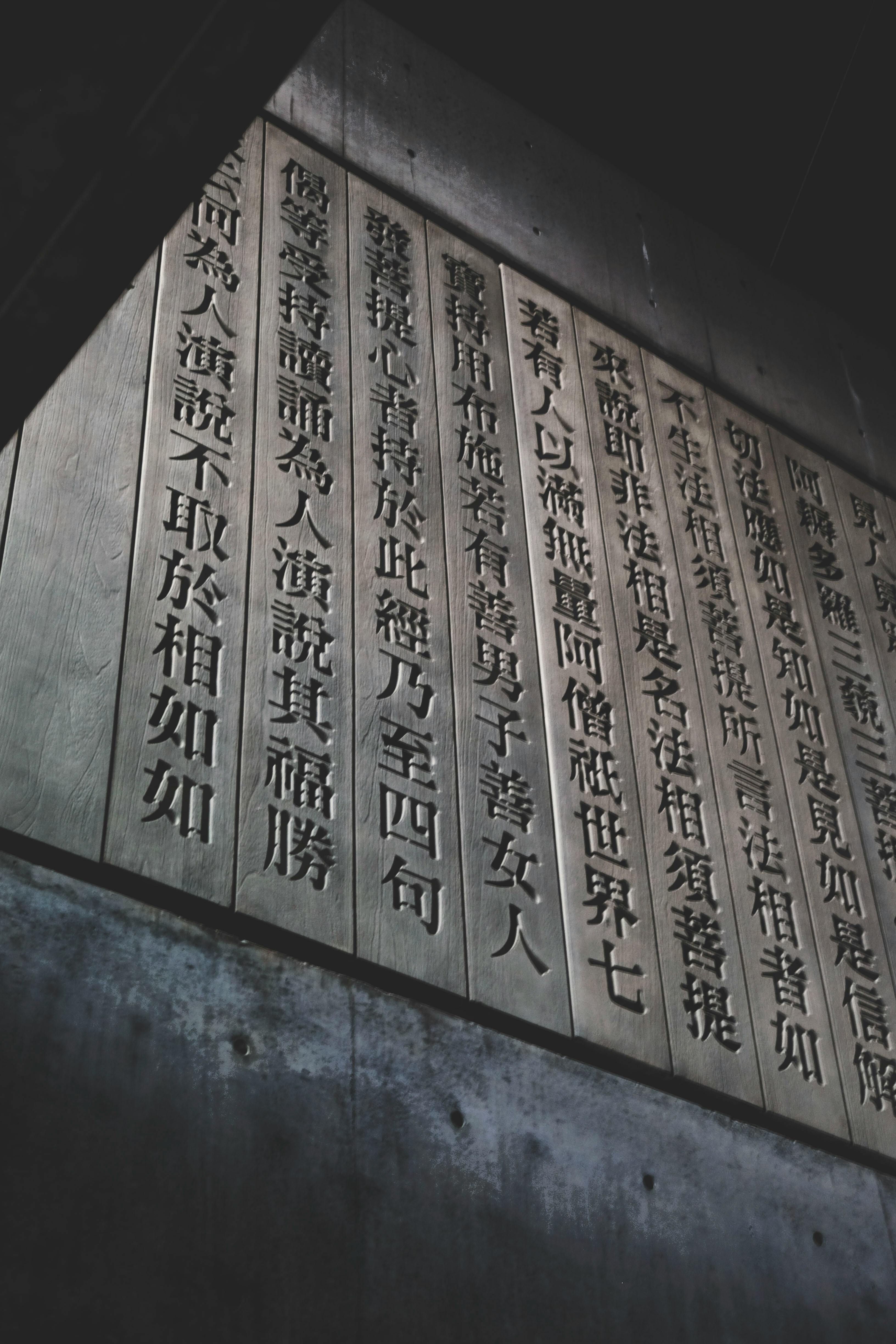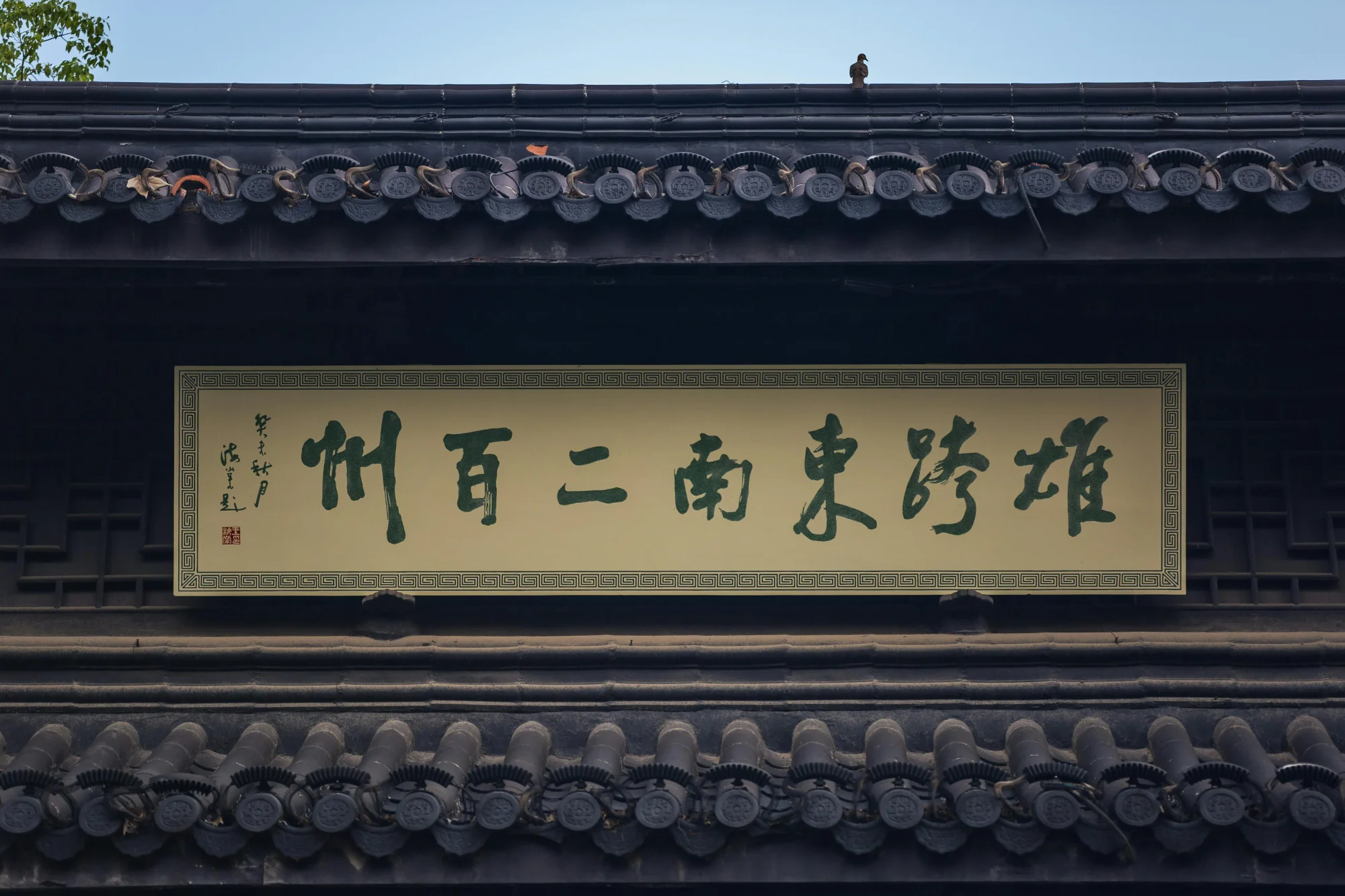Master the Chinese Language: The Pinyin Bopomofo Guide
If you're eager to unlock the mysteries of Mandarin and dive deep into the fascinating world of Chinese characters, you're in the right place. This guide is designed for lifelong learners like you, who value efficiency and are always on the lookout for scientifically-backed learning strategies. Here, we'll unravel the complex web of Pinyin and Bopomofo, two critical systems for learning Chinese.
But what is Pinyin? And what is Bopomofo? How did these systems come into being, and how are they used in the world today, both in education and in the digital realm? Most importantly, how can they support your Mandarin learning journey?
This comprehensive guide will answer these questions and many more. It will help you understand the equivalence of Pinyin and Bopomofo, including their consonants, vowels, and the exceptions that challenge their equivalence. You'll also learn how you can leverage these systems in Mandarin learning, including how they're integrated into the Traverse Learning App.
So, whether you're starting from scratch, or you're an intermediate learner aiming for fluency, this guide will serve as your roadmap, shining a light on the often confusing landscape of Chinese phonetics. With this knowledge, you'll be better equipped to learn Mandarin more effectively and retain information longer. Let's embark on this exciting exploration of Pinyin and Bopomofo.
Understanding Pinyin and Bopomofo
What is Pinyin?
Ready to dive into the world of Chinese phonetics? Let's start with Pinyin. Pinyin, or Hanyu Pinyin, is a romanization system designed to teach Standard Mandarin Chinese. It's the most common system that transcribes Chinese symbols into a phonetic system, used in mainland China, Taiwan, and to some extent in Singapore. The system includes four diacritics denoting tones, and Pinyin without tone marks is used to spell Chinese names and words in languages written with the Latin alphabet. It's an invaluable tool in learning to read, write, and type Chinese characters.
What is Bopomofo?
Next up, we have Bopomofo or Zhuyin. Unlike Pinyin, which uses the roman alphabet, Bopomofo uses non-latin symbols to represent the sounds of Mandarin Chinese. It's an alternative way to transcribe Chinese characters and is primarily used in Taiwan. The name Bopomofo comes from the first four characters of the system, similar to how QWERTY is derived from the first five keys on a standard English keyboard. The system is used in some children’s books or materials alongside Chinese characters to aid comprehension.
Understanding both Pinyin and Bopomofo can greatly enhance your Mandarin learning journey, offering different perspectives on the phonetics of the language. They bridge the gap between the written form of the language and its spoken version, enabling learners to accurately pronounce and understand Mandarin sounds.

The History of Pinyin and Bopomofo
Take a step back in time with us as we delve into the fascinating origins of Pinyin and Bopomofo.
The Origin of Pinyin
Pinyin, officially known as Hanyu Pinyin, is the romanization system for Standard Mandarin Chinese. It's predominantly used in mainland China, Taiwan, and Singapore. This system emerged in the 1950s when the Chinese government sought an efficient way to teach Mandarin to its vast population.
Pinyin serves as the foundation for teaching Standard Mandarin, which is typically written using Chinese characters. This system includes four diacritics denoting tones, and Pinyin without tone marks is used to spell Chinese names and words in languages written with the Latin alphabet. In essence, Pinyin is a phonetic system that uses Roman letters to represent the sounds of Chinese characters. One of its widespread uses is in Pinyin-based Input Method Editors (IMEs) for typing Chinese characters on a computer.
The Origin of Bopomofo
Bopomofo, also known as Zhuyin, was first developed in the early 20th century, predating Pinyin by several decades. Its name stems from the first four characters of the Zhuyin alphabet - bo, po, mo, fo, similar to how "QWERTY" denotes the layout of a standard English keyboard.
Initially created as a phonetic system to assist with the pronunciation of Chinese characters, Bopomofo is still used today, particularly in Taiwan. Here, it's frequently found in children's books and learning materials, alongside Chinese characters, to aid comprehension.
While Bopomofo might seem less familiar to those accustomed to the Latin alphabet, it holds an essential place in the teaching and learning of Mandarin, particularly in Taiwan. As a learner, understanding both Pinyin and Bopomofo can provide a more comprehensive grasp of Mandarin's phonetics, helping you to master this rich and complex language.
The Equivalence of Pinyin and Bopomofo
Cracking the code of Mandarin pronunciation can feel like deciphering an intricate puzzle. But rest easy - with Bopomofo and Pinyin, you have two powerful tools that bring clarity to the sounds of Chinese. Both systems represent the same sounds, but use different symbols. Let's delve deeper into their equivalence and understand how consonants, vowels, and certain exceptions are represented in each system.
Consonants in Pinyin and Bopomofo
Firstly, in both Pinyin and Bopomofo, the consonant sounds are straightforwardly represented. For instance, in Pinyin, the sound "b" is represented as "b". In Bopomofo, the same sound is represented as "ㄅ". These phonetic symbols, whether in Pinyin or Bopomofo, are your roadmap to accurate pronunciation.
Vowels in Pinyin and Bopomofo
Similarly, vowel sounds are represented with unique symbols in both Pinyin and Bopomofo. For instance, the Pinyin "a" is equivalent to the Bopomofo "ㄚ". Understanding these vowel symbols is like learning the melody of the Chinese language - they give voice to the rhythm and tone of spoken Mandarin.
Exceptions in Pinyin and Bopomofo Equivalence
While there is a one-to-one correspondence between Pinyin and Bopomofo for most sounds, there are some exceptions, particularly when it comes to vowel combinations. For example, in Pinyin, the combination "iu" is represented by combining the symbols for "i" and "ou" in Bopomofo (ㄧㄡ).
Alongside this, certain symbols in Bopomofo can stand alone, but would combine with a consonant or vowel in Pinyin. For example, the Bopomofo symbols "ㄧ", "ㄨ", and "ㄩ" stand alone, but in Pinyin, they combine to form "yi", "wu", and "yu" respectively.
It's important to note that these exceptions are not stumbling blocks, but stepping stones towards mastering the pronunciation of Mandarin. With practice, you'll find yourself navigating them with ease, fine-tuning your Mandarin pronunciation to a tee.
Mastering the sounds of Mandarin Chinese can feel like a daunting task, but with the precision of Pinyin and Bopomofo, you have a clear, systematic guide. Whether it's the crisp consonants, the vibrant vowels, or the nuanced exceptions, understanding these systems will take you a step closer to fluency in Mandarin.

Using Pinyin and Bopomofo in Learning Mandarin
Mastering the Chinese language is a thrilling adventure and the use of Pinyin and Bopomofo can make the ride smoother. These two phonetic systems, while different, both serve as valuable aids in learning Mandarin. Let's explore how these systems can bolster your Mandarin learning journey.
The Role of Pinyin in Mandarin Learning
Pinyin is essentially the GPS for Mandarin, guiding you through the intricacies of pronunciation. This system transcribes Mandarin sounds into the familiar Roman alphabet, serving as a linguistic bridge for English speakers. With Pinyin, you can successfully navigate every sound in Mandarin, a huge advantage in the early stages of learning. Moreover, Pinyin serves as an excellent guide to Mandarin pronunciation, as each spelling correlates with a specific pronunciation. This minimizes confusion and fosters better understanding and retention of Mandarin sounds.
The Role of Bopomofo in Mandarin Learning
Bopomofo, also known as Zhuyin, is another phonetic system that assists in learning Mandarin, especially in Taiwan. It uses a unique set of symbols to represent Mandarin sounds, making it a valuable tool for understanding the pronunciation of Chinese characters. Bopomofo can be especially helpful in reducing dependency on Pinyin and accelerating the learning of Chinese characters. Moreover, the sounds transcribed into Zhuyin align more closely with the actual sounds to be produced, offering a more precise representation of Mandarin pronunciation than Pinyin.
Pinyin and Bopomofo in the Traverse Learning App
If Pinyin is your compass and Bopomofo your map, then the Traverse Learning App is your travel guide on this exciting Mandarin learning journey. Traverse integrates these phonetic systems into its comprehensive and customized learning experience. It leverages the latest research in cognitive science and the effective strategies of successful language learners to help you master Mandarin in a more efficient and enjoyable way. With Pinyin and Bopomofo at your fingertips, you're well-equipped to conquer Mandarin, one character at a time.
Pinyin and Bopomofo in the Digital World
In the modern era, mastering Mandarin isn't just about pen and paper. Digital tools have revolutionized language learning, and both Pinyin and Bopomofo have found their places in this brave new world. Understanding how to use these phonetic systems on digital platforms can greatly enhance your learning journey.
Inputting Pinyin and Bopomofo on Computers and Smart Devices
In the realm of digital communication, input methods play a crucial role. These systems allow you to type in Chinese characters using a standard QWERTY keyboard, transforming phonetic transcriptions into written characters. For Mandarin learners, Pinyin and Bopomofo are the two primary phonetic-based input methods.
When typing in Pinyin, you simply enter the phonetic transcription of the character, and the input method software offers a list of matching characters to select from. This method is easy to learn but can be slower due to the need to choose the correct character from homophones. However, modern systems offer predictive input based on context and user preferences to speed up the process.
Inputting Bopomofo, or Zhuyin, follows a similar process. Each key on the keyboard maps to a Bopomofo phonetic symbol, allowing you to type in the sound of the character and select from a list of matching characters.
Pinyin and Bopomofo in Unicode
Unicode, the standard system for the digital representation of text, has a special place for Mandarin and its phonetic systems. Both Pinyin and Bopomofo are included in the Unicode standard, ensuring their compatibility and proper representation across different digital platforms.
Pinyin, being based on the Roman alphabet, has a straightforward representation in Unicode. However, Bopomofo's unique phonetic symbols required the creation of specific Unicode glyphs. The Unicode reference glyphs for Bopomofo ensure that these symbols can be accurately displayed and recognized across different digital platforms.
Understanding the digital applications of Pinyin and Bopomofo can significantly improve your Mandarin learning experience. By leveraging these phonetic systems, you can communicate more effectively in the digital world, aiding your journey to master the Chinese language.
Frequently Asked Questions about Pinyin and Bopomofo
One might encounter various questions when delving into the world of Pinyin and Bopomofo. Here, we aim to answer some of the most commonly asked ones.
Who Uses Bopomofo?
Bopomofo, also known as Zhuyin, is primarily used in Taiwan. It's an essential part of the Taiwanese education system where it is taught to children as a stepping stone towards learning Chinese characters. Many people in Taiwan also use Zhuyin input on their computers or laptops instead of the Pinyin input system. Zhuyin input is frequently used in children’s books or materials together with Chinese characters to aid comprehension.
Should I Learn to Use a Taiwanese Keyboard?
The answer to this question largely depends on your personal goals. If you're planning to spend a significant amount of time in Taiwan, learning to use a Taiwanese keyboard could be beneficial. It allows you to type in Bopomofo, which could be a useful skill when communicating with locals or using Taiwanese digital platforms. However, it's not strictly necessary for learning Mandarin. Most Mandarin learners outside Taiwan primarily use Pinyin as their phonetic guide.
How do you Read Zhuyin?
Zhuyin, or Bopomofo, is read similarly to Pinyin. Each symbol corresponds to a specific sound in Mandarin. The system consists of 37 characters and four tone marks representing the sounds of Mandarin Chinese. The characters are divided into three categories: initials, finals, and medials. The best way to learn how to read Zhuyin is through consistent practice and immersion. By actively using Zhuyin in your language learning journey, you'll gradually become more comfortable with the system.
Remember, the key to mastering Mandarin, whether through Pinyin or Bopomofo, lies in consistent practice and application. Embrace the challenges and remember that every step brings you closer to fluency. If you're looking for an effective, science-backed way to improve your Mandarin skills, consider using a specialized learning tool like Mandarin Blueprint that incorporates Pinyin and Bopomofo.
Conclusion
Cracking the code of Mandarin Chinese isn't a task for the faint-hearted, but with the right tools and a clear understanding of Pinyin and Bopomofo, it's more than achievable. Whether you're a fan of the phonetic Pinyin or you've chosen to embrace the symbol-based Bopomofo, each system offers unique insights into the intricate structure of the Mandarin language.
Pinyin provides learners with a familiar alphabet system, making it an excellent starting point for beginners. On the other hand, Bopomofo, with its close ties to traditional Chinese characters, offers a deeper immersion into the language, especially for those focusing on Taiwanese Mandarin.
It's crucial to remember that these systems are not competitors, but partners in your language learning journey. Both are designed to facilitate your understanding of Mandarin, aiding you in pronunciation, character recognition, and even typing in Chinese.
Remember, learning Mandarin is not a sprint, but a marathon. Consistent practice, patience, and a willingness to learn from mistakes are key. As we've seen, Pinyin and Bopomofo are powerful tools in this journey, and understanding how to use them effectively can make a significant difference in your learning curve.
As you continue on your path to mastering Mandarin, keep in mind the unique features and benefits of both Pinyin and Bopomofo. Take advantage of the resources available to you, like the Mandarin Blueprint with its focus on character learning and immersion.
In the end, the choice between Pinyin and Bopomofo, or even using both, is a personal one. Find the method that works best for your learning style, and embrace the adventure that is learning Mandarin!


